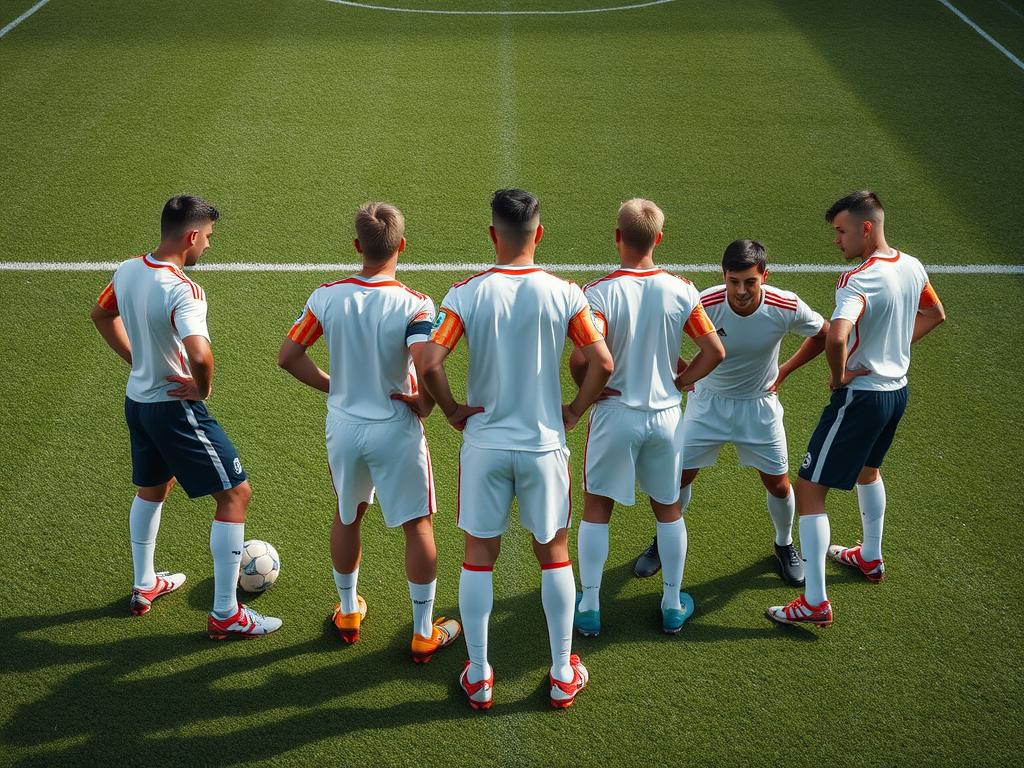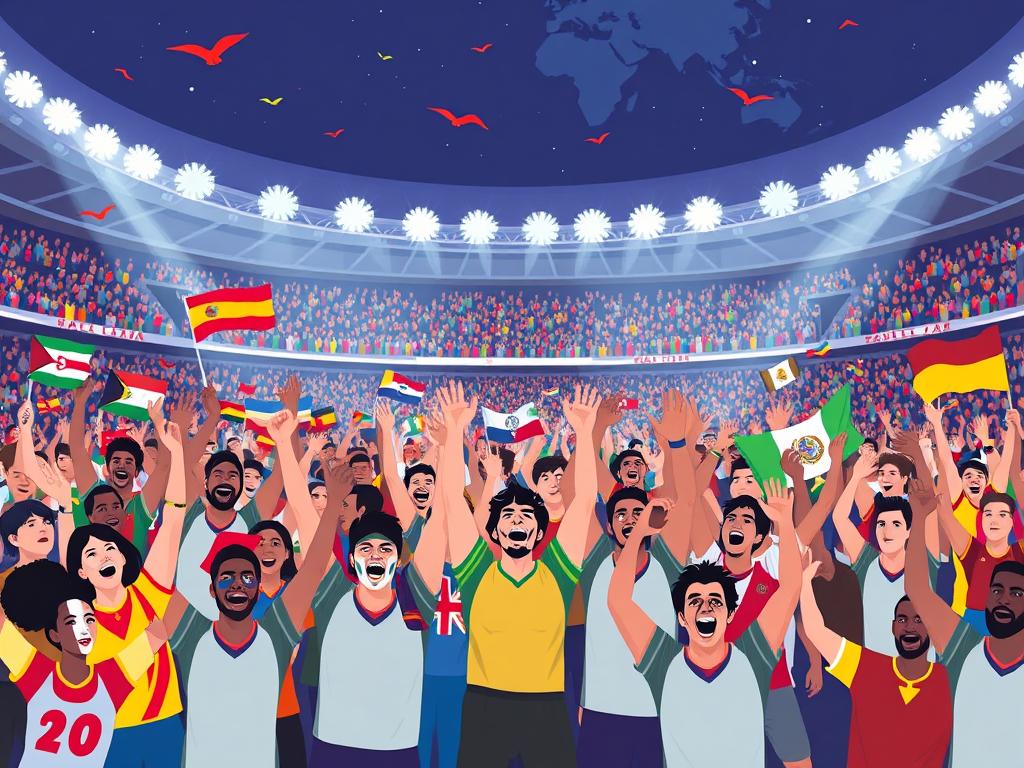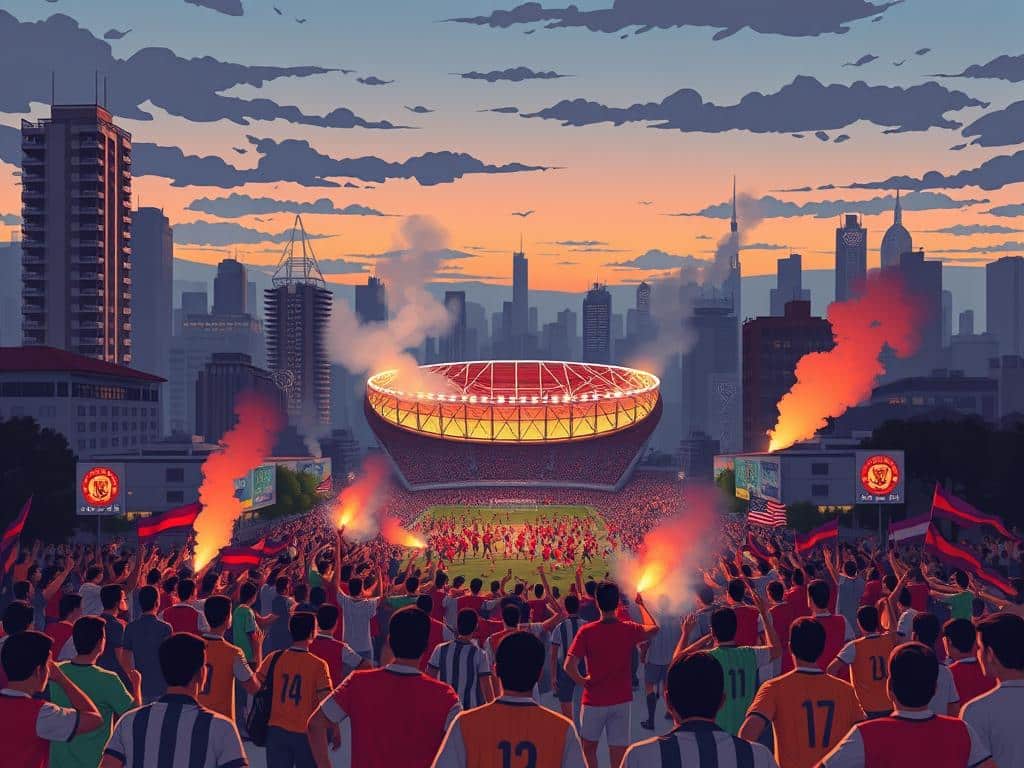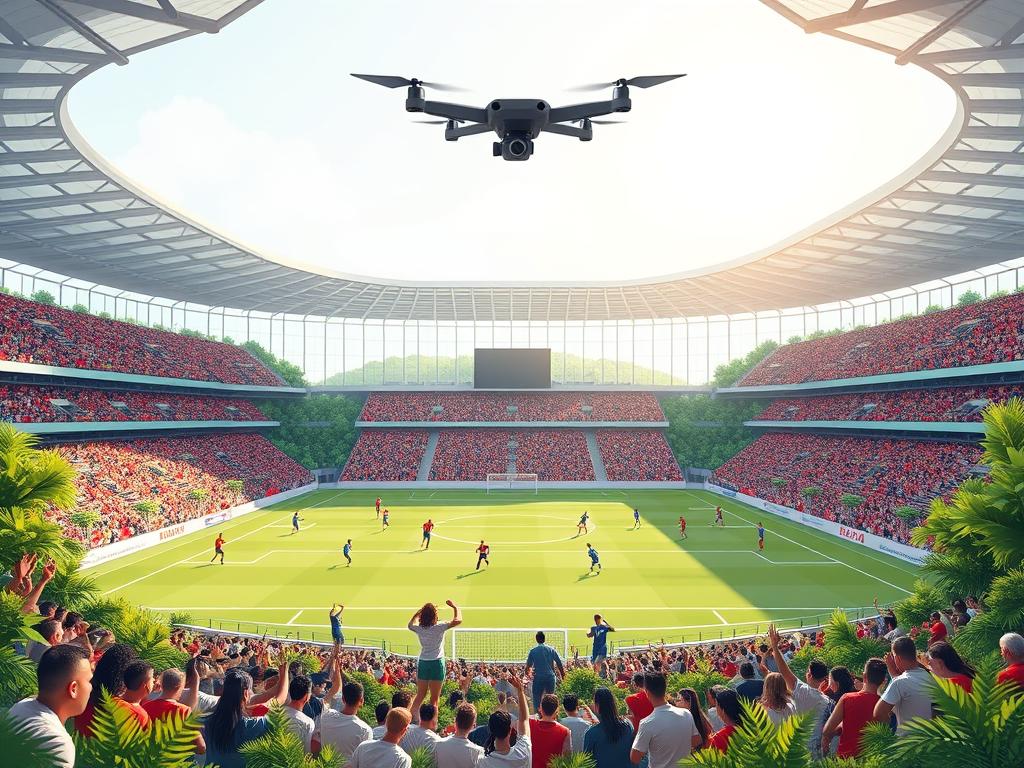I’ll start bluntly: the phrase most passionate soccer fan bases captures places where belief becomes noise and stadiums feel alive. I want to show you where that energy comes from and why it matters to teams on the pitch.
From Atlanta United’s huge MLS crowds to Anfield’s “You’ll Never Walk Alone,” these examples map the global landscape. You’ll read about Besiktas’ deafening support and Eintracht Frankfurt’s massive traveling presence, plus packed cauldrons at Elland Road and St. James’ Park.
Expect specifics: attendance trends, iconic rituals, and how local identity fuels loyalty. I’ll balance in-stadium atmosphere with popularity and digital reach so you see the full picture of fanbases that change games.
Key Takeaways
- Real examples show why crowd energy influences match outcomes.
- Attendance and rituals matter as much as raw decibel levels.
- Some fanbases punch above their size through travel and tradition.
- Digital reach amplifies popularity beyond stadium walls.
- You’ll get clear criteria to identify must-visit stadiums.
What “passion” looks like on matchday
A matchday starts long before kickoff — the air changes. Streets fill with scarves. Bars hum with chants. You feel it walking toward the stadium.
How I weigh noise, loyalty, and culture
I look for volume you feel in your chest, singing that keeps going, and choreography that turns a terrace into a stage.
Loyalty shows in sellouts across a season, away-end turnouts in bad weather, and staying until the final whistle.
Culture lives in marches, tifos, local songs, and the way a club adopts city identity on matchday.
Why attendance and social reach both matter in 2025
Attendance proves fans show up. Social media shows how far a voice carries worldwide.
| Metric | Atlanta United | Inter Miami |
|---|---|---|
| 2024/2025 average | 46,831 / 44,227 | – |
| Global followers | – | 19M+ |
European nights vs. MLS traditions
European nights spike the senses — flares, songs, and sustained pressure. MLS builds traditions across a long season with marches and choreo that grow every home game.
Players react. Teams lift. A club’s passion is a composite of noise, loyalty, culture, and reach that scales across a league and the world.
Global cauldrons that define atmosphere
Some stadiums behave less like buildings and more like living rooms for a city. They shape the game’s tempo, pressure the visiting side, and hand a psychological edge to the home team.
Besiktas: deafening decibels and relentless support
Vodafone Park turns neighborhoods into an echo chamber. Flares and choreography combine with a wall of sound so thick that visiting players have complained — Timo Werner once asked to be subbed because of the noise. The 2017 decibel peak against Liverpool set a benchmark; that intensity repeats across years, driven by organized supporters who never switch off.
Liverpool: Anfield’s ritual and rivalry intensity
Anfield is calibrated around one song — “You’ll Never Walk Alone” — and rivalry nights ratchet the atmosphere higher. History, hymns, and coordinated noise make tackles feel heavier and moments feel decisive. Players consistently cite the crowd as a factor in Champions League nights and big domestic matches.
Athletic Club: San Mamés and Basque pride on full display
San Mamés channels regional identity into precise, educated support. The club’s Basque-only tradition is mirrored by chants that align with match moments. It’s not just volume; it’s timing that lifts the team at critical phases.
Eintracht Frankfurt: traveling thousands and taking over cities
Frankfurt supporters convert away ends into home stands. In 2022 they packed Barcelona streets and filled stadia across Europe. Whole cities turn black and white as thousands follow — a visible, vocal presence that impacts game flow and opponent composure.
- These clubs earn their reputation through consistent, visible match influence.
- Flags, drums, timing, and planning make atmosphere a tactical asset.
- Over years, organized supporters shape how teams play and respond to pressure.
MLS fanbases where the stands never sit down
MLS matchdays hum differently — each city brings its own drumbeat. Below I break down five clubs where rituals, travel, and digital reach shape the season.
Atlanta United: NFL-sized crowds and supporter-led choreography
Average: 46,831 (2024) / 44,227 (2025). Terminus Legion and Footie Mob drive huge choreo and a scale that flips momentum.
Seattle Sounders: March to the Match and Cascadia energy
Average: 30,754 (2024) / 30,537 (2025). The March to the Match turns the city into kickoff, and the Emerald City Supporters set the pace inside the stadium.
Portland Timbers: tifos, chainsaws, and a neighborhood fortress
Average: 21,949 (2024). Providence Park feels personal — massive tifos, drums, and the chainsaw ritual make home daunting.
LAFC: The 3252 and a culture rooted in Los Angeles
Average: 22,121 (2024) / 21,645 (2025). The 3252 crafts cinematic matches from minute one; the South End sets tone and tempo.
Inter Miami: Messi effect and a global digital footprint
Average: ~20,900 (2024) / 20,733 (2025). With 19M+ followers, social media turns local moments into worldwide conversation.
| Club | 2024 Avg | 2025 Avg |
|---|---|---|
| Atlanta United | 46,831 | 44,227 |
| Seattle Sounders | 30,754 | 30,537 |
| Portland Timbers | 21,949 | – |
| LAFC | 22,121 | 21,645 |
- Scale and ritual convert stadium noise into a tactical edge.
- City identity anchors support so clubs build culture, not copycat displays.
- Social media amplifies what supporters earn live — clips become global momentum.
Premier League diehards who turn stadiums into pressure cookers
On certain nights the crowd becomes an extra player, shaping every pass and tackle. I want to show why Elland Road, St. James’ Park, Selhurst Park, Anfield, and Arsenal’s Emirates can change a game’s shape.
Leeds United: Elland Road in full voice
Elland Road goes from venue to furnace when it fills. The home support makes the opposition’s first touch look heavier and forces mistakes early.
Newcastle United: St. James’ Park as a nonstop chorus
At St. James’ Park the chorus rolls downhill for 90 minutes. That constant pressure leaves visiting sides with little room to breathe or build rhythm.
Crystal Palace: Selhurst Park’s intimidating, non-stop backing
The Holmesdale End pounds out a steady rhythm and colors the match. You feel surrounded in the tunnel and on the pitch—an atmosphere that frays nerves.
Arsenal and Liverpool: tradition, trophies, and tireless followings
Arsenal’s history and titles create expectation that lifts players in tight moments. Liverpool’s legacy—anchored by “You’ll Never Walk Alone”—makes big fixtures personal and electrified.
- Why it matters: organized noise and tradition create urgency and can tilt momentum.
- Long view: these clubs built identities over years; that memory becomes a tactical asset.
- Reality check: in the world’s most-watched league, stadium support still decides how hot a match runs.
Underrated European fan cultures flying under the radar
Across Europe there are corners where support feels like local ritual, not just a matchday habit. These scenes reward close attention: color, timing, and identity combine into a unique match-night language.
AEK Athens: choreographed displays and derby electricity
AEK turns derby nights into choreographed chaos. Coordinated color and giant tifos set a tone before kickoff. The rivalry sparks explosive moments that shape the first half.
Partizan Belgrade: Grobari’s unyielding presence
Partizan’s Grobari deliver relentless volume. Massive tifos and flares make the message clear—this is their house, even in away arenas. Travel and midweek commitment underline deep loyalty.
St. Pauli: socially driven identity and cult support
St. Pauli fuses purpose and party at Millerntor. A values-first culture attracts a growing, informed following. Songs carry political and local references—timing and tone that match the match flow.
- These clubs turn support into ritual: flags, travel, and midweek devotion.
- In a continent of giants, under-the-radar scenes offer pure, raw passion.
- Visit Agia Sophia, Partizan Stadium, or Millerntor to see how city roots shape a team’s voice.
The most passionate soccer fan bases
Crowds that move and breathe together change how a match is fought.
I study how ritual, timing, and design convert noise into a tactical asset. When supporters cue chants or raise banners at a specific moment, players react — they sprint, hold shape, or force errors.
Clubs that consistently turn games with their support
Look for stands that participate, not observe. Drums, coordinated songs, and visual cues win second balls and stretch pressing lines.
Examples across continents, from MLS to Europe
Patterns repeat: Atlanta’s sustained crowds; Liverpool and Besiktas with signature anthems; Eintracht Frankfurt traveling in numbers; Portland and Seattle shaping match rhythms.
- Why it matters: sustained noise creates late-game belief and measurable home advantage.
- How teams use it: clubs that invite supporter input turn rituals into strategic power.
| Club | Primary Impact | Metric | Practical Result |
|---|---|---|---|
| Atlanta United | Scale | Avg attendance 46,831 | Home dominance |
| Liverpool | Anthem timing | Ritual-driven spikes | Penalty-area pressure |
| Besiktas | Decibel power | High sustained noise | Visiting errors |
| Eintracht Frankfurt | Travel presence | Thousands on the road | City takeovers |
Rivalry heat: fixtures that amplify the crowd
When local pride is on the line, the crowd shifts from background to tactical force. A single match can sound different from minute one. Noise cues push a team forward or force errors.
North London, Merseyside, and Tyne-Wear dynamics
North London derbies spike volume early—every duel feels decisive. In the premier league, Merseyside clashes make Anfield and Goodison pressure chambers where simple passes become risky.
Tyne-Wear turns aerial battles into citywide contests. The crowd times shouts to influence headers and second balls.
Cascadia Cup and El Tráfico as MLS benchmarks
The Cascadia Cup is pure theater: traveling sections, scarf walls, and coordinated rhythms that shape games. El Tráfico pits LAFC’s 3252 rhythm against the Galaxy’s legacy banners and voices.
Derbies in Athens, Belgrade, and Istanbul
Athens and Belgrade derbies light the night with flares, choreo, and sustained noise. In Istanbul, supporters deliver organized intensity that never lets up.
- What changes: louder cues, faster transitions, and tactical risks demanded by the crowd.
- Result: momentum flips on a chant; the pitch narrows as pressure rises.
| Fixture | Characteristic | Practical Effect |
|---|---|---|
| North London | Early volume spikes | Immediate pressure on build-up |
| Merseyside | Relentless intensity | Passing errors and rushed decisions |
| Cascadia / El Tráfico | Traveling support / cultural display | Shifted momentum and tempo |
| Athens / Belgrade / Istanbul | Flares & choreo | Uninterrupted noise that shapes games |
Attendance, sellouts, and loyalty over years
Attendance tells a clearer story than a viral clip — who shows up, and how often, defines loyalty. Numbers tie into behavior: repeat season tickets, queued returns after bad spells, and away travel that does not dip.
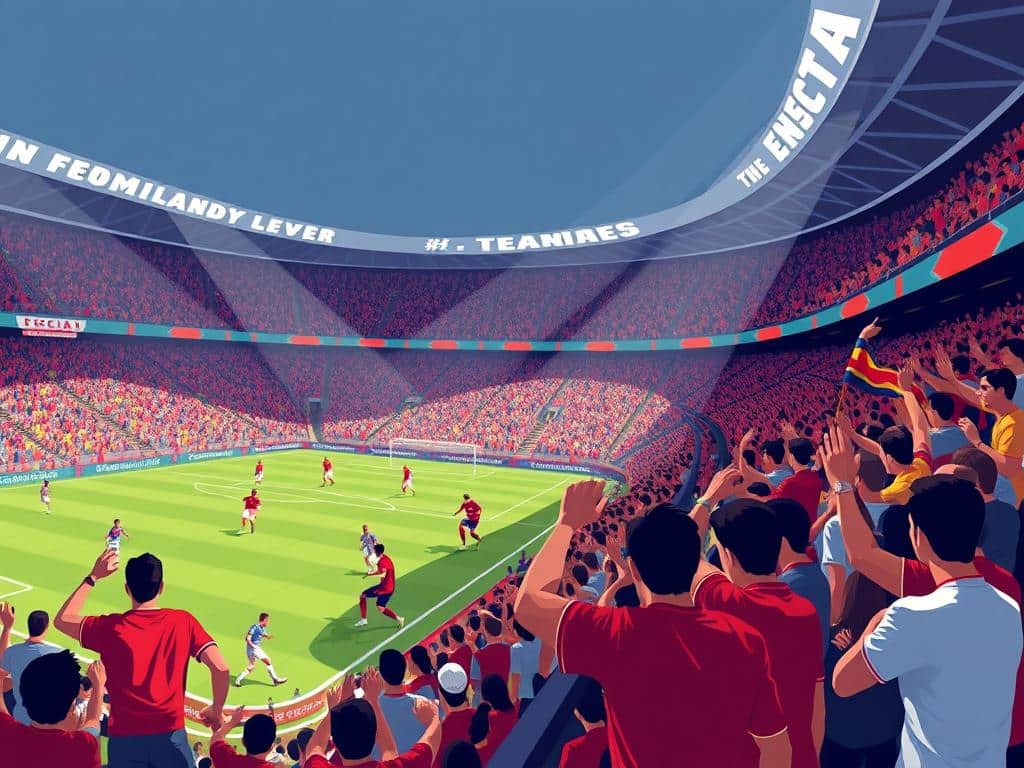
Atlanta’s sustained MLS-leading crowds
Atlanta averaged 46,831 in 2024 and 44,227 in 2025. Those sellouts mean fans return across a season and through highs and lows.
Seattle and Portland’s consistency through seasons
Seattle holds ~30.7K and Portland ~21.9K. The base shows up on weeknights and in rain — that steady support is habit more than hype.
Leeds and Newcastle filling historic homes
Both clubs keep historic stadiums near capacity. In the Premier League, home noise and tickets passed down over years shape matchday pressure.
- Sustained crowds lift players on flat afternoons.
- Support shows in away turnouts and queued season tickets.
- Loyalty is part culture, part habit — built by clubs that invite fans into the process.
| Club | Avg Attendance | Practical Effect |
|---|---|---|
| Atlanta United | 46,831 / 44,227 | Consistent sellouts |
| Seattle Sounders | ~30,700 | Steady base |
| Portland Timbers | 21,949 | Tight sightlines, intense home |
Attendance context still beats social media when you need to know who will sing at minute 90. I watch numbers over time to see which teams truly carry a home advantage in world football and American soccer today.
Social media reach vs. in-stadium intensity
Digital reach can make a club a household name without a single chant echoing in its stadium. I watch both signals — clicks that build popularity and human voices that shape a match.
Inter Miami’s global pull
Inter Miami’s rise is obvious: ~19M followers and a post-Messi surge. That global attention sells merch and fills highlight reels across the world.
Reality check: their attendance (~20.7K in 2025) shows fans follow on screens as well as in seats. Online fame drives tours and curiosity, not guaranteed home pressure.
LA Galaxy’s legacy and digital scale
LA Galaxy still carry decades of star-era memory and 2M+ followers. Their attendance peaked at 26,135 (2024) then dipped to 20,453 (2025).
What matters: old-guard loyalty—season-ticket renewals and away-day caravans—keeps a steady backbone that digital buzz can’t replace.
- Key point: social media builds brand; sustained singing builds momentum.
- The club that turns clicks into chants wins tight games over a season.
| Metric | Inter Miami | LA Galaxy |
|---|---|---|
| Followers | ~19M | 2M+ |
| 2025 Avg Attendance | ~20.7K | 20,453 |
| Practical Effect | Global popularity, sold-out road dates | Legacy draw, in-stadium weight |
Stadium traditions that set the tone
Moments like a march, a saw, or a choreo cue flip a quiet game into an urgent one. These rituals shape the atmosphere and tell players what to expect from minute one.
Sounders’ March to the Match and The Bailey in Cincinnati
Seattle’s March to the Match pulls an entire city toward kickoff. By the time you step inside, you are already part of the rhythm.
The Bailey at TQL turns one end into a drumline. Late in the game, that steady noise forces attackers to speed up and defenders to clear sooner.
Timbers’ log-slicing and Palace’s Holmesdale End rhythm
Portland’s log ritual is tactile — the saw and stump mark moments. Players learn to link that cut with momentum shifts.
Crystal Palace’s Holmesdale End controls tempo. Chants rise when the press works; silence never holds for long. That pushes the team to act faster.
Besiktas’ wall of sound and choreo at Vodafone Park
Besiktas coordinates volume and visuals so the end reads like a single voice. On Champions League nights the effect multiplies.
When supporters lock in timing, the visiting side misreads cues and makes more errors. Traditions become rules: arrive early, sing often, and back your club loud.
- Why it works: communal cues restart stalled plays and reward effort with instant noise.
- At home, players tackle harder and move quicker when the stands back them.
- Clean rituals turn any place into a tactical advantage across games.
America’s rising soccer cities and supporter sections
In a few U.S. cities, stadium noise now feels like a local soundtrack.
St. Louis CITY SC sells out regularly. The St. Louligans lead chants, visuals, and marches that set the tone before kickoff. Visiting sides notice the organized voice and timing—Lower.com Field feels loud from minute one.
St. Louis CITY SC sellouts and the St. Louligans
Sellouts are routine. That attendance becomes ritual, not just curiosity. The St. Louligans’ banners and drums create a clear home identity that lifts the team.
Nashville’s Music City twist on chants and instruments
At GEODIS Park, live instruments change cadence. Songs speed up when the press mounts and slow to protect possession. It’s a musical approach that matches the city’s culture and the club’s tempo.
Charlotte’s NFL-scale energy converted to soccer fervor
Charlotte drew 35,141 in 2024 and 30,812 in 2025. That NFL-scale buzz translated quickly into chants and end-to-end engagement. New traditions stuck fast because the section made them its own.
- Why it matters: support that sounds like the place it comes from grows fastest.
- Fans show up early, stay late, and give the side a steady home pulse.
- New clubs find success when the fanbase owns the rhythm and the city joins in.
| City | Characteristic | Practical Effect |
|---|---|---|
| St. Louis | Consistent sellouts / organized supporters | High home pressure |
| Nashville | Live instruments / tempo control | Match-cadence shifts |
| Charlotte | NFL-scale crowds / fast tradition building | Immediate stadium energy |
Curious about how stadium rituals shape matchday? Read about the MLS stadium experience to see how place and support link to on-field energy.
Clubs where community and history power the fanbase
Community action has rewritten the rulebook for how a club lives in its city. Two clear examples show how people, policy, and history create lasting culture.
Columbus Crew survived because of a movement, not a marketing plan. “Save The Crew” mobilized supporters and civic leaders to keep the club local. That campaign rebuilt trust and reshaped MLS politics.
The Nordecke became more than a section; it grew into ownership of matchday ritual. Choreography, drums, and a steady turnout followed titles and investment. Attendance rose to 23,464 in 2025, proof that community-first choices turned the stadium into a true home.
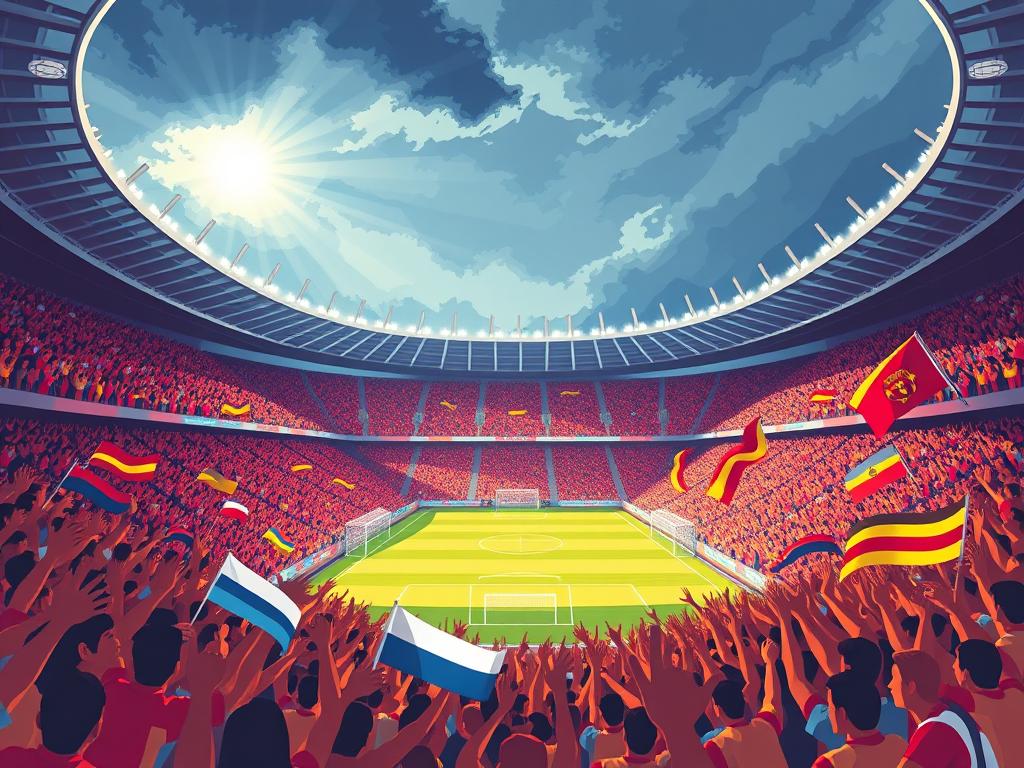
Athletic Club: identity as policy
Athletic Club’s Basque-only model links recruitment to regional pride. That daily decision binds players, fans, and city into a single story.
At San Mamés, history is an active brief. Chants reference local memory and timing that lifts the team when it matters. This approach proves success is more than trophies—it’s the loyalty that stays through hard years.
- Columbus: community saved a club and built practical loyalty.
- Athletic Club: policy and people create an identity that players embody.
- Both show how a football club becomes civic: shared values make the stands respond.
| Club | Core Driver | Practical Result |
|---|---|---|
| Columbus Crew | Community activism | Stronger attendance / rebuilt trust |
| Athletic Club | Regional player policy | Unified identity / intense stadium noise |
| Shared lesson | People + policy | Long-term loyalty beyond one year |
How to measure passion without missing the point
You can’t judge a crowd by one night — you need a simple framework. I give you a practical way to blend hard numbers with visible behavior so you see who truly moves a match.
Blending metrics: attendance, decibels, tifos, and travel
Start with who shows up: home attendance across years and whether the end stays full at minute 90.
Next, add decibel and density: how loud it gets and how compact the noise feels near the pitch.
Count culture: number and scale of tifos, drum lines, and choreographed moments tied to key game phases.
Measure travel: away-end size and how often cities get taken over on big fixtures.
Context matters: relegations, promotions, and European nights
Weight context. A loud Tuesday in February can mean more than a derby that sells itself.
Promotions, relegations, and Champions League or Premier League nights test resilience — watch who stays loud in lean stretches.
Bottom line: passion is a pattern over years, not a single highlight. Fans supply power; teams must channel it. Judge both source and conversion.
- Quick checklist: attendance trend, peak decibels, tifo scale, away takeovers, and context weighting.
| Metric | Practical use | Why it matters |
|---|---|---|
| Attendance (years) | Stability check | Shows repeat loyalty |
| Decibels & density | Intensity measure | Impacts match pressure |
| Tifos & travel | Visible culture | Signals organized support |
Conclusion
Real atmosphere arrives when people time their voices to key moments, not just volume. I’ve shown how rituals, travel, and city identity shape a club’s edge on the pitch. Digital reach spreads a club’s name across the world, but live noise still defines a game.
Takeaways:
- Organized ends pair with clubs that welcome supporter voice into matchday.
- A loud night can nudge teams and change the flow of a football match.
- Premier League cauldrons and MLS traditions use different routes to the same pressure.
- Social reach matters, yet the timeless currency is people singing in unison.
- Make time to visit these grounds — your idea of atmosphere shifts the second you hear the first roar; learn more about notable rivalries here.


